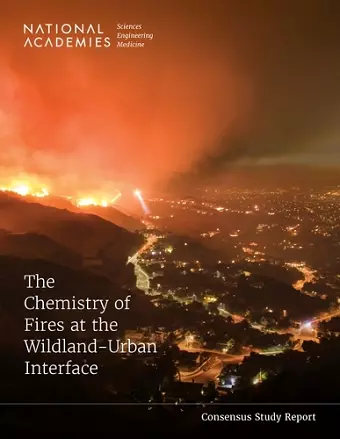The Chemistry of Fires at the Wildland-Urban Interface
Division on Earth and Life Studies author Board on Chemical Sciences and Technology author National Academies of Sciences, Engineering, and Medicine author Committee on the Chemistry of Urban Wildfires author
Format:Paperback
Publisher:National Academies Press
Published:23rd Jan '23
Currently unavailable, and unfortunately no date known when it will be back

Wildfires in America are becoming larger, more frequent, and more destructive, driven by climate change and existing land management practices. Many of these fires occur at the wildland-urban interface (WUI), areas where development and wildland areas overlap and which are increasingly at risk of devastating fires as communities continue to expand into previously undeveloped areas. Unlike conventional wildfires, WUI fires are driven in part by burning of homes, cars, and other human-made structures, and in part by burning vegetation. The interaction of these two types of fires can lead to public health effects that are unique to WUI fires.
This report evaluates existing and needed chemistry information that decision-makers can use to mitigate WUI fires and their potential health impacts. It describes key fuels of concern in WUI fires, especially household components like siding, insulation, and plastic, examines key pathways for exposure, including inhalation and ingestion, and identifies communities vulnerable to exposures. The report recommends a research agenda to inform response to and prevention of WUI fires, outlining needs in characterizing fuels, and predicting emissions and toxicants.
Table of Contents- Front Matter
- Summary
- 1 Introduction
- 2 Defining and Contextualizing WUI Fires
- 3 Materials, Combustion, and Emissions in WUI Fires
- 4 Atmospheric Transport and Chemical Transformations
- 5 Water and Soil Contamination
- 6 Human Exposures, Health Impacts, and Mitigation
- 7 Measurement of WUI Fires: Emissions and Exposures
- 8 The Future of WUI Fire Research
- Appendix A: Glossary
- Appendix B: Committee Biographical Sketches
- Appendix C: Available Data for Example Fires
- Appendix D: Public Workshop Agenda
- Appendix E: Engineering Calculations for Table 3-2 <
ISBN: 9780309277051
Dimensions: unknown
Weight: unknown
214 pages